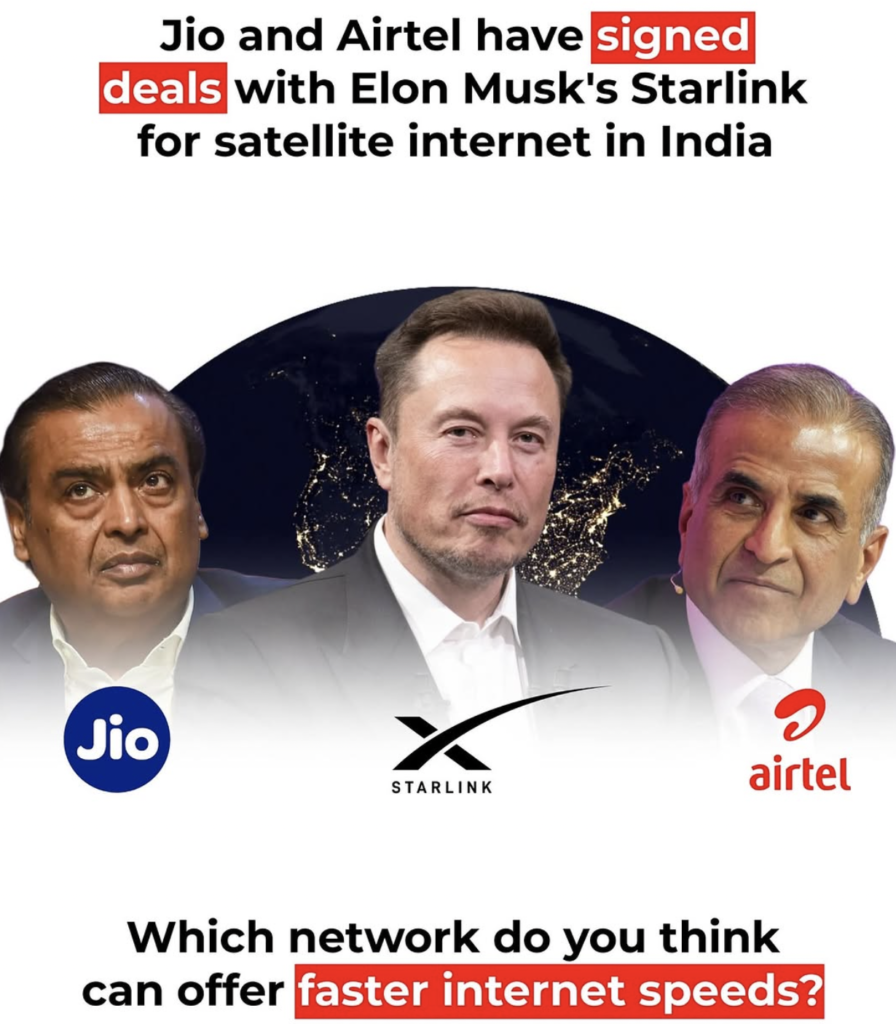During a G20 meeting in New Delhi in March 2023, Bill Gates praised India’s growing digital network, pointing out that it could become the “cheapest 5G market in the future.”
The drive for global internet access and high-speed connectivity is gaining momentum, with satellite broadband taking a prominent role. Exciting new initiatives and collaborations hint at a future where internet access is available to all, despite lingering concerns about possible negative effects.
Watch: In March 2023, part of India’s G20 Presidency, Bill Gates praised India’s digital network, forecasting that it will evolve into the ‘cheapest 5G market in the future’.
March 2025: Starlink, led by Elon Musk, is taking the lead in internet access by partnering with top Indian telecom firms Bharti Airtel and Jio to deliver high-speed internet throughout India. These agreements not only broaden Starlink’s global influence but also enhance its mission to reach out to areas that lack proper internet service.

The fast growth of technology comes with its own set of worries. Many people are anxious about the effects on the environment, possible health risks, and the fact that some people might still be left behind when it comes to using new technology.
These alliances make use of Airtel and Jio’s existing networks and market influence to introduce Starlink’s low-earth orbit (LEO) satellite internet to areas that have not had good internet access before. As a result, rural areas, remote communities, and places affected by disasters will benefit from faster internet speeds and more stable connections, even when regular infrastructure is damaged.

But the ambition doesn’t stop at simply connecting existing devices. A revolutionary new smartphone concept is also gaining traction, promising to further blur the lines between terrestrial and satellite communications. This modular smartphone, reportedly compatible with Starlink, aims to integrate a host of cutting-edge features:
- Solar Charging: Integrated solar panels would allow for off-grid charging, enhancing accessibility in areas with limited power infrastructure.
- Satellite Telephony: Compatibility with Starlink’s satellite network would offer reliable communication in areas where cellular coverage is patchy or nonexistent.
- Neuralink Integration: Perhaps the most ambitious feature, the proposed integration of Neuralink technology aims to provide individuals with neuronal disabilities the ability to control the device and even other technologies, like vehicles, through brain-computer interfaces.
FEATURES OF THE TESLA MODEL PI : https://forbes.com.mx/forbes-life/tecnoligia-elon-musk-quiere-fabricar-su-primer-smartphone/
The idea of a gadget that can skip regular cell networks and provide cool features is really thrilling, but it also brings up important questions we need to think about.
Satellite Broadband- Drawbacks and Health Implications: Understanding the Possible Risks
The expansion of satellite broadband and the development of integrated devices present a unique set of challenges:
- Space Debris: The increasing number of LEO satellites raises concerns about space debris and the potential for collisions, which could disrupt satellite services and create further orbital hazards.
- Light Pollution: The brightness of satellite constellations can interfere with astronomical observations and potentially disrupt nocturnal ecosystems.
- Environmental Impact: The production and launch of satellites, as well as the disposal of defunct ones, have a significant environmental footprint.
- Health Concerns: While research is ongoing, concerns persist regarding the potential health effects of prolonged exposure to the electromagnetic fields emitted by satellites and wireless devices. Studies are needed to assess the long-term impact on human health.
- Digital Divide: While satellite internet promises wider access, the cost of equipment and subscription fees could still create a digital divide, leaving low-income communities behind.
- Neuralink Concerns: The ethical and practical implications of Neuralink integration, including data privacy, potential for misuse, and long-term health effects, require careful consideration and rigorous oversight.
Potential Health Effects:
- Radiofrequency (RF) Radiation Exposure: While the levels of RF radiation emitted by satellite internet terminals are generally considered low, long-term exposure concerns still exist. Further research is needed to fully understand the potential health effects of prolonged exposure.
- Electromagnetic Hypersensitivity: Some individuals report experiencing symptoms like headaches, fatigue, and dizziness in response to electromagnetic fields (EMF). While the scientific evidence supporting EMF sensitivity is limited, it remains a concern for some.
- Psychological Effects: The constant availability of internet access can lead to increased screen time, sleep disturbances, and social isolation. These factors can negatively impact mental and physical well-being.
The benefits of having satellite broadband everywhere are obvious, giving people incredible access to information, education, and job chances. However, we must carefully think about and deal with the possible drawbacks and health worries that come with this quickly changing technology to ensure it is used fairly and responsibly.
Additional information:
In October 2024, Airtel has firmly positioned itself in the satellite communication sector through its partnership with OneWeb. They are delivering satellite internet services and constructing ground stations in states like Gujarat and Tamil Nadu. Bill Gates is involved with OneWeb through his investment firm, Breakthrough Energy Ventures, highlighting his focus on enhancing global connectivity and addressing the digital divide.
Source: Youtube-image
Also Read:
